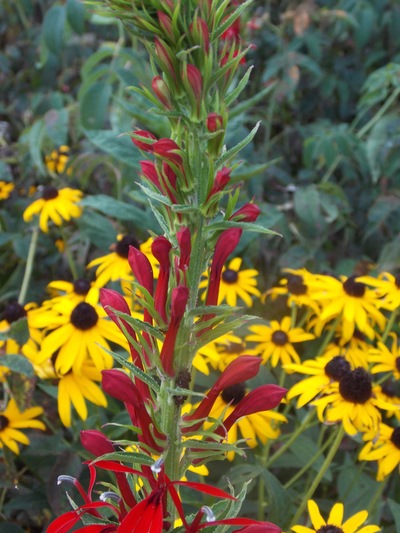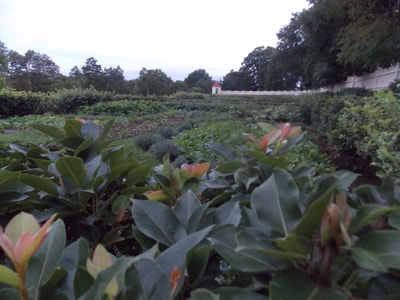| I did not think I would be interested in George Washington's gardens and farms as much as I was. In my recent visit during one week of Mount Vernon's Teacher Institute, I heard something I never considered: "If a person asked George Washington what he was, he would say 'a farmer'." Not a soldier or a general. Not a political leader or a president. A farmer. For example, one of the first structures that caught my eye outside of the mansion was a smallish shed with no walls, rebuilt on the same spot as the original - a Dung Repository. |
Not only this, but Washington was the first to transform his plantation from tobacco to wheat. He knew, through personal study, that tobacco was depleting the soil. He rotated his crops. He allowed certain acreages to lie fallow for a season before replanting. Yes, I would say that Washington was a farmer.
The evidence of such, today, can be found in his upper and lower gardens.
Destroyed by fire in the 19th century, the greenhouse was rebuilt with an interesting building material. When Missouri's own Harry Truman was president, he ordered the White House to be rebuilt. Keeping the outer walls intact, the house was gutted and reconstructed. During this time, colonial brick from the original structure was rounded up and offered to the Mount Vernon Ladies' Association. Colonial brick, from the People's House, from before the British burned it, was relocated to Mount Vernon and used in the walls of a rebuilt greenhouse.
| The lower garden sports more crops for practical use - vegetables mainly. The plants are arranged interestingly; not only are they organized, with cisterns in central locations, but they are also quite aesthetically pleasing. A person is drawn to a small, octagonal building in the corner. This building is the seed house, where seeds are harvested and saved for future seasons. In this manner, crops are perpetuated and not lost to time. | |





























































